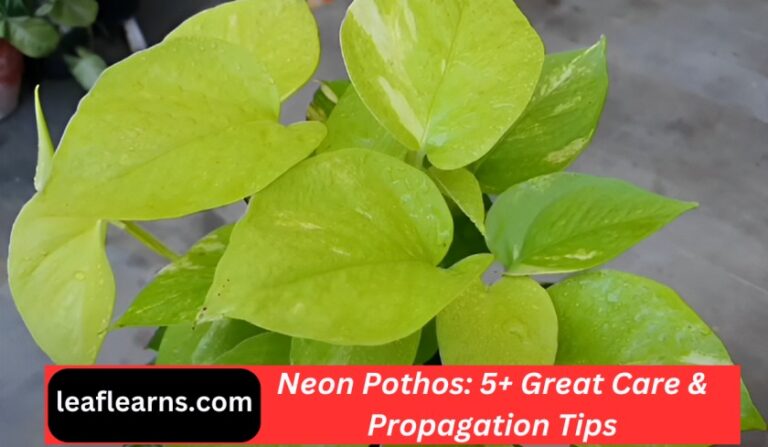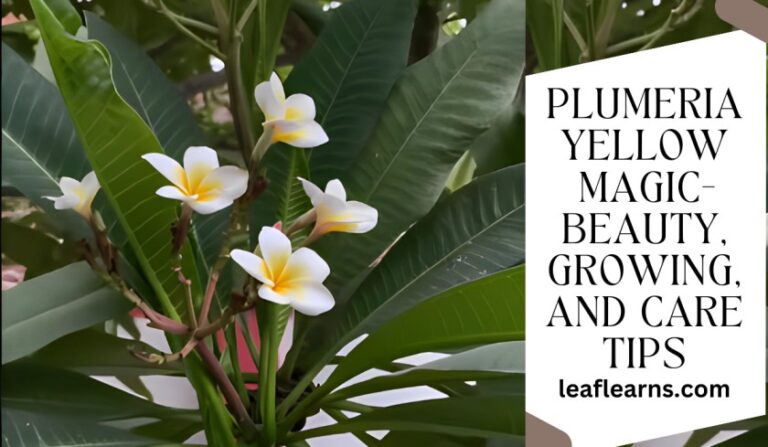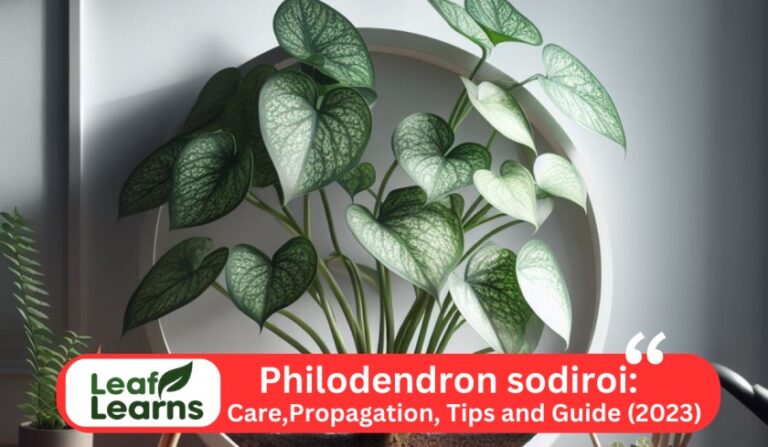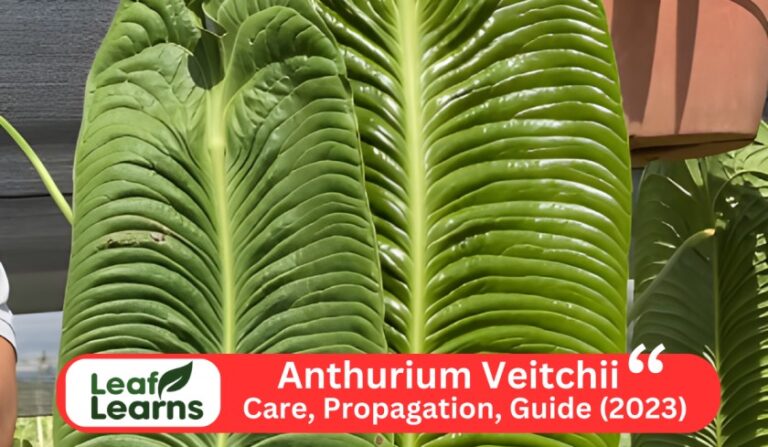Ardisia Crenata: Versatile and Beautiful Houseplant
A lovely evergreen shrub from Asia with the popular names of Christmas berry, coralberry, or spiceberry, Ardisia crenata has made its way into gardens all over the world due to its decorative appeal.
This bushy, compact plant normally grows 3 to 6 feet (1-2 metres) tall and has glossy, dark green leaves that are both attractive and useful.
But what makes it stand out are its vivid red berries, which grow in clusters and give gardens a festive feel, especially in the winter.
| Common name | Christmas Berry, Coral Ardisia |
| Scientific Name | Ardisia Crenata |
| Family | Primulaceae |
| Distribution | Southeast Asia, Japan, China |
| Plant type | Evergreen Shrub |
| Height | 3 to 6 feet in height |
| Growth rate | Slow to Moderate |
| Leave colour | Glossy, Dark Green, Crenate Margins |
| Flower | Small, White, Fragrant |
| Berries | Bright Red, Toxic to Humans and Pets |
| Toxicity | Berries are Poisonous if Ingested |
| Light requirement | Partial to Full Shade |
| Soil requirement | Well-draining, Moist Soil |
| Watering Need | Regular Watering |
| Uses | Ornamental Plant, Landscape Shrub |
| Wildlife attraction | Attracts Birds |
| Special feature | Decorative Berries, Suitable for Shade |
| Maintenance | Pruning to Control Size |
| Life cycle | Woody |
| Flower Bloom Time | Spring and summer |
| Leaf length | 3-6 inches |
Despite having a lovely look, this plant may be invasive in certain locations and is seen as a weed in others because of its propensity to grow quickly.
It is appropriate for forest gardens or shady borders since it does best in wet, shaded conditions. When growing it, gardeners should use caution to avoid it displacing native plants.
A healthcare provider should be consulted before attempting any home cures, however various components of the plant have been employed for their possible therapeutic characteristics in traditional medicine. Ardisia-crenata is a stunning plant overall, but it has to be carefully managed to avoid becoming unduly invasive in gardens.

Contents
- 1 Caring for Ardisia Crenata: Indoor and Outdoor Care Tips
- 2 The Feng Shui Significance and Precautions
- 3 Ardisia Crenata Plant Problems, Solutions and Answers
- 4 Cultivation
- 5 Naturalized Distribution
- 6 Habitat
- 7 Stems and Leaves
- 8 Flowers and Fruit
- 9 Humidity
- 10 Propagation
- 11 Care and Growing Tips
- 12 Protection from Cold
- 13 The Beauty of Ardisia Crenata
- 14 Potential Challenges
- 15 Sunlight & Location
- 16 Hydration
- 17 Occasional Feeds
- 18 Reduce Everything
- 19 Impacts
- 20 Control Methods
- 21 Conclusion:
- 22 FAQs
Caring for Ardisia Crenata: Indoor and Outdoor Care Tips
If you’re looking to care for an Ardisia-crenata, also known as coral berry in various languages, it’s important to provide it with the right conditions. This versatile arbuste can be grown both indoors and outdoors, making it a popular choice among plant enthusiasts. When growing this plant indoors, place it in a well-lit spot away from direct sunlight to avoid scorching its leaves.
Proper arrosage (watering) is essential; keep the soil consistently moist but not waterlogged. In terms of temperature, this plant prefers a mild, consistent climate and can be sensitive to extreme fluctuations. When it comes to entretien plante (plant care), occasional pruning is recommended to maintain its shape and encourage new growth.
The Feng Shui Significance and Precautions
In addition to its aesthetic appeal, it is often associated with feng shui, bringing positive energy into a space. Its vibrant red berries are a symbol of prosperity and good fortune. However, it’s crucial to note that the berries of this plant are not edible and can be toxic if ingested, so exercise caution if you have pets or small children.
Whether you choose to acheter Ardisia-crenata for its feng shui significance or its ornamental beauty, with proper cuidados de la Ardisia crenata (care), you can enjoy this lovely plant in your home or garden.
Ardisia Crenata Plant Problems, Solutions and Answers
Got a growing slowly child? When your plant is beginning to grow buds in the spring, give it additional humidity and sunlight. It will benefit from routine sprinkling with water that is room temperature to add moisture to the air. Spider mites that favour dry environments can be deterred by misting.
Dry soil or chilly air are likely to be to blame for dropping flower buds. But not too chilly, This plant prefers a cool environment. It can withstand winter temperatures as low as 45°F/7°C. Keep the plant away from air conditioning and heating vents and out of doors.
When should I prune? If necessary, prune this shrub each spring just before it blooms to maintain it compact and in form.
When should I repotter? Move up to a container that is 1-2 inches (2.5–5 cm) larger once the roots have filled the one you have. It won’t tolerate damp soil, so use a container with drainage holes. Repotting should never be done while the plant is in bloom since it may lose its flower buds. Instead, wait until late winter or early spring.
Is there a problem with your plant? In the winter, spider mites are drawn to warm, dry dwellings. On your indoor plants, keep an eye out for these sap-sucking bugs. Their delicate webbing between leaves and stems, as well as their dry-appearing, mottled foliage, are the first things you’ll notice. Mealybugs resemble white, fuzzy specks that are found on the undersides of leaves and the stems of plants. To stop an infestation from harming your indoor plants, treat it right away.
Cultivation
Widely grown as a garden adornment for its fruit’s vivid colours, especially in Australia’s drier regions. For use as garden ornaments, several cultivars of this plant have been created bearing fruit in a variety of hues. The most popular varieties are Ardisia-crenata ‘Alba’ and ‘Pink Pearls’, which have mature fruit that is brilliant pink and white, respectively.
Naturalized Distribution
Eastern Queensland’s coastal regions, northern New South Wales, and the Sydney region all recognised naturalisation.The coral berry has spread internationally and now grows naturally in places including southern Africa, the Seychelles, Hawaii, the Mascarenes, and the south-eastern United States (i.e. Florida and Louisiana).
Habitat
Rich, well-drained soils in somewhat shaded locations are preferred by this plant (such as in closed woods, adjacent to forest borders, and beside streams). It is a weed that grows in warmer temperate, subtropical, and tropical climates.
Stems and Leaves

In most plants the top half of the stems are the only ones with branches. The younger branches are circular and green (3–4 mm thick). The majority of the stems and leaves are glabrous (i.e., hairless).
The simple leaves are dark green and alternately oriented, measuring 5–20 cm long and 1-4 cm broad. They have a narrowly oval or elongated form (i.e., elliptic-lanceolate or oblanceolate) and are generally thick and leathery in texture. These leaves have slightly serrated (i.e. crenulate) or finely wavy (i.e. undulate) edges and are glossy and dark green above with lighter and duller undersides.
They are born on short, pointed stalks called petioles that range in length from 3 to 10 mm and feature acute to acuminate apices. Each leaf contains a central vein that is surrounded by 12–18 pairs of side veins (also known as lateral nerves), which are somewhat elevated on the lower surface and combine into a single vein towards the leaf border (also known as a marginal nerve).
Flowers and Fruit
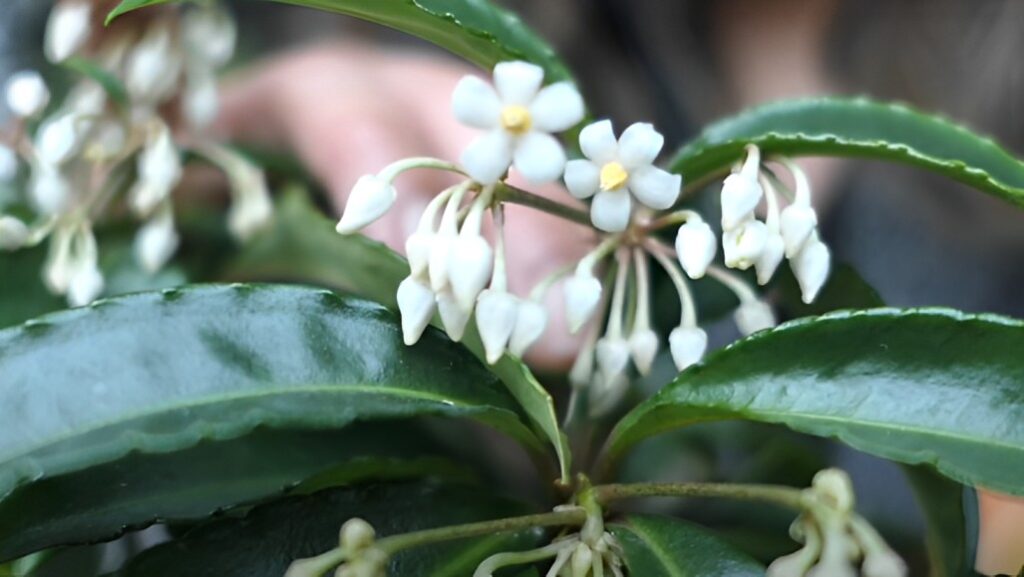
Small, fragrant, and ranging in hue from white to reddish-pink are the blooms. They grow in groups on 4 to 16 cm long blooming stems. These blooming branches often split into a number of shorter branches (or rays) that are each 2-4 cm long and carry multiple flowers on stalks (or pedicels) that are 5-10 mm long and lengthen further when in fruit. Five short sepals (1-2.5 mm long) with rounded ends (i.e., obtuse apices), five petals, and five stamens are often present on the blooms, which are 4-6 mm in diameter.
The five 4 mm long, white, or rarely pinkish, petals are somewhat fused at the base and feature sharp apices, or pointy points. When the blooms are young, numerous tiny black puncta, or spots, can be observed on them (i.e., they are black punctate).
Showy bright to dark red berries, which are actually drupes, appear after the blooms and can stay on the shrub for several months. These fruits start off green in hue before changing to various shades of crimson as they ripen. They are 5-8 mm wide, are shiny, and spherical (or globose) in form.
| Associated Fauna | Its blooms are fertilised by insects. Birds most likely consume the fruits. |
| Cultivation | In addition to stem and leaf cuttings, it may be grown from seed. |
| Etymology | Greek ardis, a point, alludes to the plant’s pointy anthers; Latin crenata, cut in rounded scallops, alludes to the contour of the leaf blade margins. |
| Ethnobotanical Uses | Fruits and leaves of plants that can be eatenThe supposedly sweet and petite fruits are edible, as are the vegetables. In salads, the leaves are also used as a vegetable. Eaten as ulam with sambal belachan, young shoots.)Medical (Earaches and skin conditions are treated using crushed herbs or juice derived from them. The herb is also used to make a decoction that is consumed for sprains and fractured bones. For coughs, fevers, and diarrhoea, the roots’ juices are utilised; a decoction is used as a post-workout tonic.)[Others]: During the Lunar New Year, this shrub or treelet is grown in pots as an excellent plant for sale. The Chinese place a high emphasis on energy, life, and wealth, which are represented by the fruit’s shining, vivid red hue. |
Humidity
Coral Berries are more than adequately occupied by the average room humidity. Never place this plant closer than three metres from a working radiator since it will roast both the plant and the moisture in the surrounding air.
Propagation
Seeds
Although this process might be time-consuming and demanding of patience, This plant can be cultivated from seeds. Pick the ripe berries from the plant, then collect the seeds. Plant them in a potting mix that drains well, water the soil often, and give them indirect sunshine. It usually takes a few weeks to a few months for seeds to germinate.
Cuttings
Cuttings are a more productive way to grow this plant. Choosy stems with multiple leaves should be clipped below a leaf node, then they should be inserted into a prepared rooting media. During the rooting phase, maintain high humidity and warmth; roots should appear in a few weeks.
Division
In the spring, mature Ardisia-crenata plants can also be split. Make sure that the root ball is divided into several pieces, each with healthy roots and leaves. These divisions should be replanted in appropriate areas.
Care and Growing Tips
Location
This type of plant is a great option for gardens that receive some shade or are shadowed by large trees since it thrives in light to full shade. Make sure it receives filtered sunlight to maintain lush, colorful foliage.
Soil
Acidic, well-draining soil is necessary for robust development. Adding organic matter to the soil, such compost or peat moss, can help with drainage and acidity levels.
Watering
Ardisia-Crenata is to maintain a constant moisture level in the soil that is not wet. When the top inch of soil seems dry, especially during dry times, water thoroughly. Mulching around a plant’s base helps control soil temperature and moisture retention.
Fertilization
Feed your plant with a balanced, slow-release fertilizer in the spring. Avoid over-fertilizing, as it can lead to excessive foliage growth at the expense of berry production.
Pruning
Regular pruning is essential to maintain an attractive shape and encourage new growth. Prune after flowering to remove dead or damaged branches and promote bushier growth.
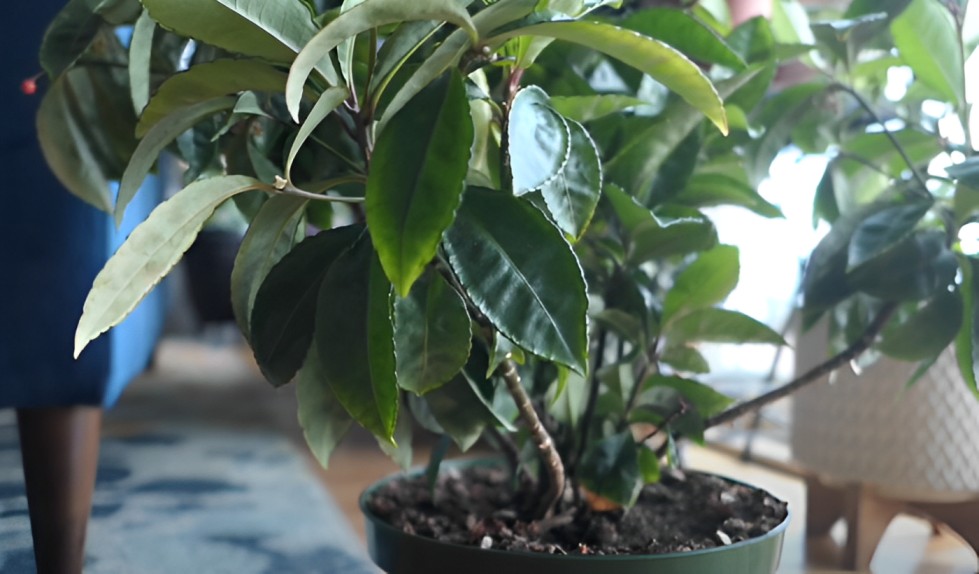
Protection from Cold
Despite being typically hardy in USDA zones 7 to 11, this plant may need protection from strong winter weather, especially in colder areas. When it’s chilly outside, protecting the plant with a frost cloth or bringing potted plants inside can help.
The Beauty of Ardisia Crenata
The glossy, dark green foliage of plant is one of its most remarkable characteristics. The plant seems lush and full due to the lance-shaped leaves that are grouped in an alternate pattern along the stems. Small, fragrant, pink or white blooms that are produced by the shrub throughout the winter months give appeal to your yard.
But the show-stopping feature is the vivid crimson berries. The term “Christmas berry” refers to the clusters of berries that can persist from late autumn into the winter. Your garden will become a wildlife-friendly area thanks to these vibrant berries, which also provide your eyes a visual treat.
Potential Challenges
While this plant is relatively low-maintenance, it’s not without its challenges:
Pests
Watch out for typical garden pests like mealybugs and aphids. These annoyances can be managed with timely insecticidal soap treatments and routine inspections.
Diseases
Fungal diseases can affect this, especially if the soil is consistently wet. Ensure proper drainage and avoid overhead watering to minimize the risk of diseases like root rot.
Invasive Potential
In some regions, this plant can become invasive. Be sure to check with local authorities and consider alternative plants if this is a concern in your area.
Dormancy Care & Annual Flowers
It’s not very difficult to try to get a bloom; those who have a cooler room without artificial light at night have an advantage. From the conclusion of the summer until the beginning of spring, when growth slows, the following procedures should be taken. When the time comes for flowers, always keep in mind the acronym SHORT from ukhouseplants.
They are best suited remaining in the container for a number of reasons, such as to temporarily stress the plant and avoid root rot or transplant shock. Although it may sound cruel, restricting the roots is the greatest approach to get blooms since they will produce clusters as a defence against being threatened. No harm is done, as long as the plant is afterwards repotted in the spring every three years.
Sunlight & Location
Make careful to offer a bright area with up to three hours of daily partial sunshine. Avoid using artificial lighting or settings with temperatures higher than 18°C (64°F) to allow the specimen to properly season.
Hydration
Reduce the amount of water so that roughly half the soil is dry. The next generation will need to inherit their DNA if you don’t keep them on the drier side of life since they’ll believe that tough times are coming.
Occasional Feeds
Use a ‘Tomato’ fertiliser when the plant is in bloom to provide it potassium-rich nutrients every month.
Reduce Everything
This one is to remind you that you need to lower the temperature and lower everything else.
Temperature
The most important step is to lower the temperature by about 5°C from midsummer or to place the container in a room that is around 15°C (59°F).
The inflorescence can still be moved inside the main house as long as it is placed on a pebble tray, but the temperature reduction should preferably persist until the inflorescence has finished blooming.
The consistent ambient temperature will put you at a serious disadvantage because Coral Berries only react with blossoms in cooler conditions. Never go beyond the minimal temperature since doing so might, at the at least, cause plant death or yellowed leaves.
Impacts
Many natural regions in Florida have been overtaken by coral ardisia, which has taken root there. It is prevalent in hardwood hammocks and has become a serious nuisance.
Native seedlings and understory plants are shaded out by coral ardisia, which hinders their growth and development and disturbs native plant communities.
The germination of valuable native species’ seeds is further hampered by mature plants’ prodigious seed production and potential for being surrounded by many seedlings. Their seeds have a germination rate of around 90%.
UF/IFAS is against coral ardisia. The FDACS Florida Noxious Weed Index lists coral ardisia as a banned weed. Coral ardisia is forbidden according to the UF/IFAS Assessment, and FLEPPC has classified it as a Category l invasive species because of its propensity to encroach upon and replace native plant groups.
Control Methods
Preventive Measures
Never grow new plants in the landscape and never take out already existing ones to prevent coral ardisia. Removal need to take place before seeds are generated, if at all feasible. Since seeds can stay on a plant for several months, precautions must be taken to stop seed dispersal and spread when removing them.
For usage in residential landscaping or natural environments instead of coral ardisia, other native plants to consider include marlberry (Ardisia escallonioides), wild coffee (Psychotria nervosa), and myrsine (Rapanea punctata).
Cultural/Physical
Once the plant is established, physical management is challenging, but continuous control efforts and a good ground cover will prevent seedling establishment.
Mechanical
Different strategies can be formed using mechanical approaches. Hand pulling is helpful for controlling seedlings in isolated or minor infestations.
Larger plants can be chopped or burnt, but they will come again from their root crowns and subterranean rhizomes. If the disking procedure is frequent and deep enough to sever the rhizome/rootstocks, disking can be quite successful.
However, because ardisia is most severe in forests, the use of disking is relatively restricted. Additionally, any mechanical operation—whether disking or burning—should be observed for at least a year to check for and eliminate seedlings and/or resprouts.
Biological
There are no known biological control agents for coral ardisia.
Chemical
Basal bark: 10% Garlon 4.
Foliar: 3% Garlon 3A. The addition of 1% Plateau to Garlon 3A as a foliar treatment provide preemergent suppression of new seedlings plant for several months.
Conclusion:
A beautiful decorative this plant may improve the appearance of your landscape. It adds year-round beauty to any landscape with its glossy leaves, fragrant blooms, and vivid red berries.
While supporting a robust and diversified garden ecology by using the right propagation methods and sticking to care instructions. Bring this beautiful plant home, and watch it grow, bringing you delight and colour for years to come.
FAQs
What are the health benefits of Ardisia crenata?
The main benefit of this plant is to stop asthmatic contractions and spasms
Is Ardisia crenata toxic?
Yes it is suspected that the berries and/or foliage are poisonous to livestock, pets, and humans.
What does Ardisia crenata symbolize?
The berry represents perfection and “sweetness in life and character” in Victorian floral language.
What are the key considerations for caring for Ardisia crenata, both indoors and outdoors?
When growing this indoors, the plant has to be kept in a bright area out of direct sunlight, with the soil being kept continuously wet but not soggy. It prefers a constant, moderate climate. For the purpose of preserving its form and encouraging new development, occasional trimming is advised.
What are some potential challenges and pests that Ardisia crenata may face in cultivation, and how can they be managed?
A timely application of insecticidal soap can be used to control common garden pests like mealybugs and aphids. In order to reduce the danger of illnesses like root rot, good drainage and avoiding overhead watering are crucial. Fungal infections can also impact the plant.
How can Ardisia crenata be propagated, and what are the key care tips for its successful growth?
You may grow from seeds, cuttings, or division. The plant grows effectively in acidic, well-draining soil in areas of partial to complete shade. For its maintenance and growth, appropriate watering, infrequent feeding, trimming, protection from excessive cold.



